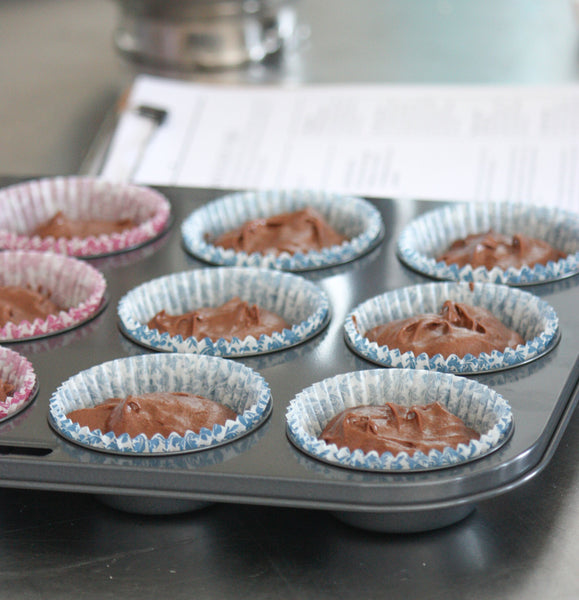BakeTips
Clever and useful tips for your kitchen.
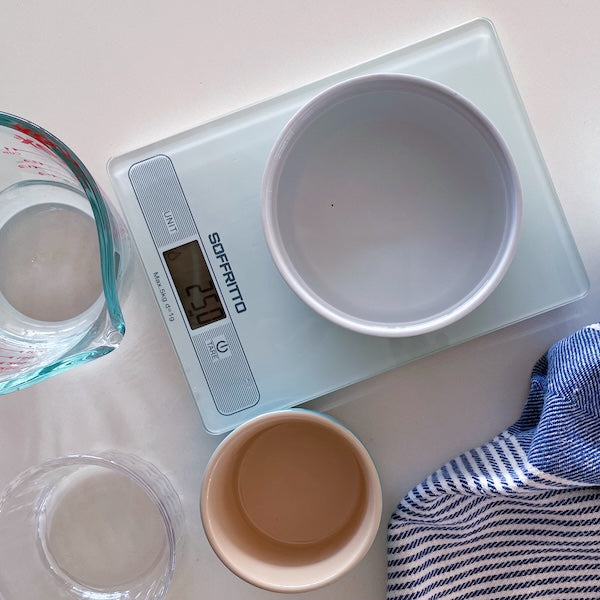
Check your ramekin size
Recipes will sometimes call for a dish or ramekin with a specific capacity – like when making a soufflé or creme brûlée. The easiest way to check your dish capacity is to fill it with...
read more
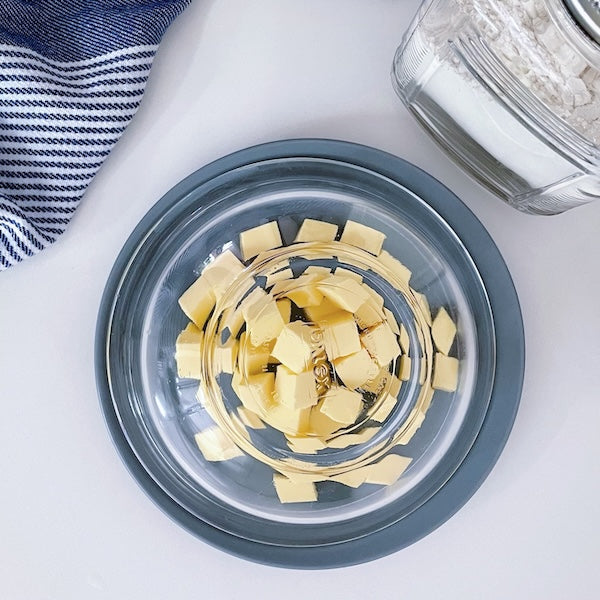
Softening Butter in Winter
Often cake, biscuit and pudding recipes will specify that the butter needs to be ‘softened’ which means it should be soft enough that you can lightly press your finger into it and leave an imprint...
read more

Toasting and Peeling Nuts
Toasting and then peeling nuts not only enhances and deepens their flavour, but also reduces their bitterness, especially walnuts. Here’s an easy way to peel nuts of any kind before using them in your baking:...
read more

Smoothing Cake Batter
If a cake batter is too thick to settle evenly on its own in the tin, it’s always a good idea to smooth it out before baking. A metal tablespoon works perfectly for this —...
read more

Curdled Cake Batter
Have you ever noticed when making a cake or pudding that the batter looks a little curdled? Well, don’t worry, it’s just how the butter and eggs work together. However, a badly curdled base can...
read more

Don't over rub (when making pastry)
When making shortcrust pastry, it is important not to overdo the rubbing in! The term ‘rubbing in the butter’ can be a bit misleading — what you’re really wanting to do is break and flatten...
read more

Lining a Shallow Tin
When lining a shallow tin, such as a Swiss roll tin or slice tin, the simplest way to ensure that the base and all four sides are lined is to take a single piece of non-stick baking paper that is about 8cm larger than the base of the tin.
read more

Replacing Sugar with Honey or Golden Syrup
Have you ever wanted to replace crystal sugar (like caster sugar, raw sugar or brown sugar) with honey or golden syrup? To do this, here is a simple, and general, 2-step rule to follow: Substitute...
read more

Making Shortcrust Pastry in a Food Processor
Using your food processor when making shortcrust pastry is dead easy and super quick.
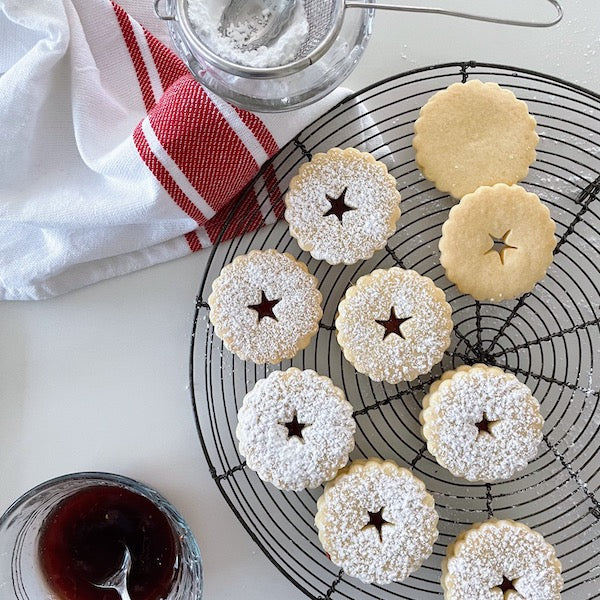
Sandwiching Jam Cookies
Did you know that when sandwiching two separate cookies together with jam, the trick is to make sure the jam is warm? Warm jam will not only mean it will be easy to spread evenly...
read more

Smooth Cream Cheese
When making cheesecakes or frostings using cream cheese it’s a good idea bring the cream cheese to room temperature before you start. If you use it straight from the fridge it will be far more...
read more
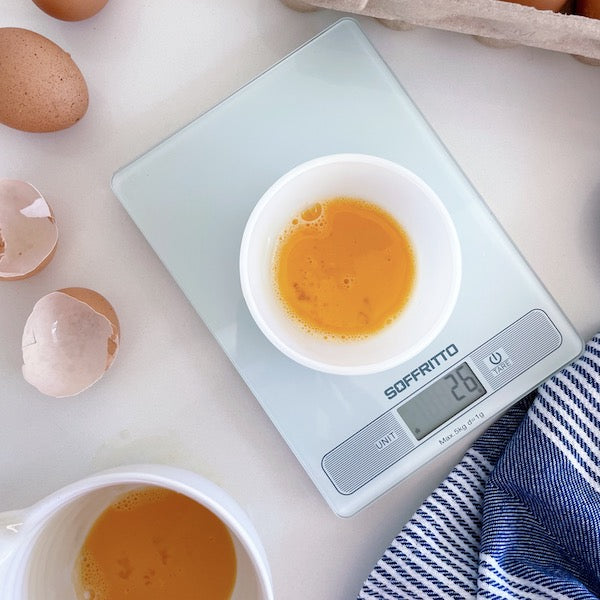
Using Less Than One Whole Egg
Small batch baking recipes often require less than one egg to be used. Here are some useful tips to help portion your eggs. Eggs used in BakeClub recipes are 59-60g/2oz eggs (with shell) and are sold...
read more
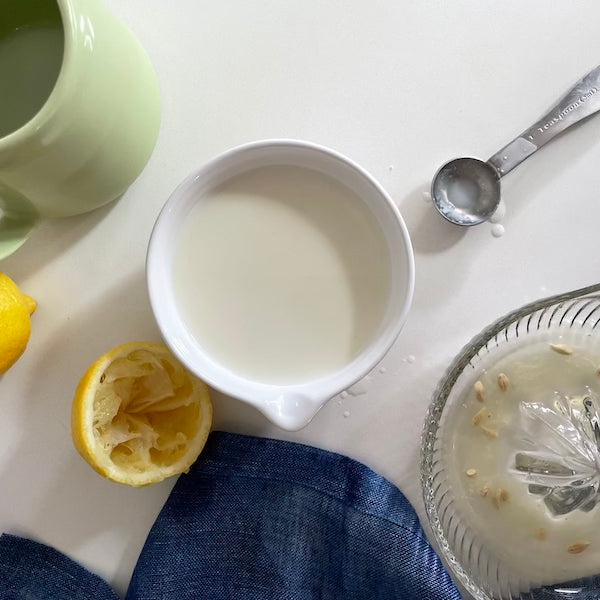
Making Your Own Buttermilk
If you don't have buttermilk on hand when a recipe asks for it (or only need a small amount which doesn’t warrants buying a whole carton), you can simply make your own version! Add 3...
read more
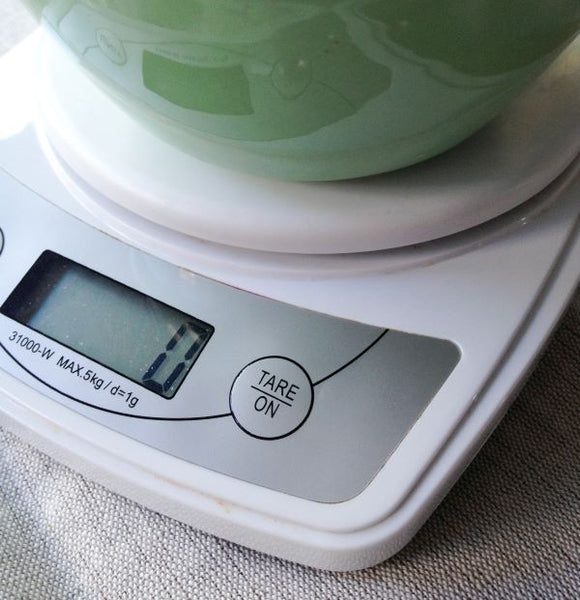
Using the Tare Setting on Your Digital Scales
Use the Tare Setting on your Electronic Scales.
To save you time when baking, make good use of your electronic scale’s ability to 'zero' the reading.
read more
Utensils To Use When 'Folding'
When a recipe asks you to ‘fold’ (such as when incorporating whisked egg whites into a base mixture) the best utensil to use is either a large metal spoon or silicone spatula. Their clean ‘slicing’...
read more

Lining a Springform Tin
Don't fuss when lining the base of a springform tin with baking paper.
read more
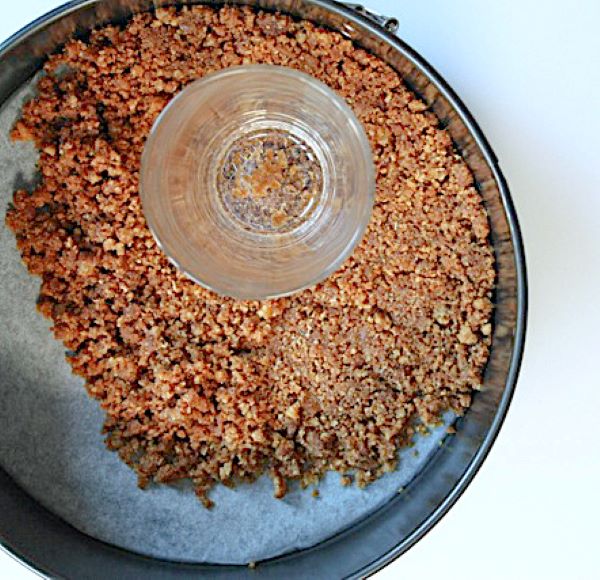
Creating an Even Crust
It can be tricky to create an even crust made from a biscuit crumb mixture for a cheesecake or slice.
read more


